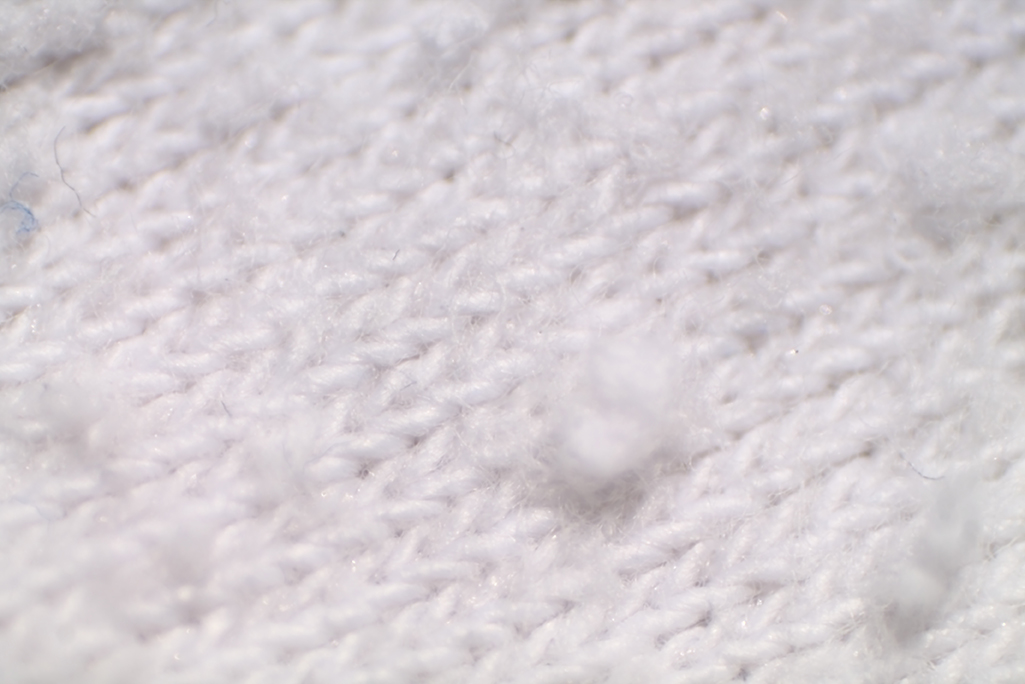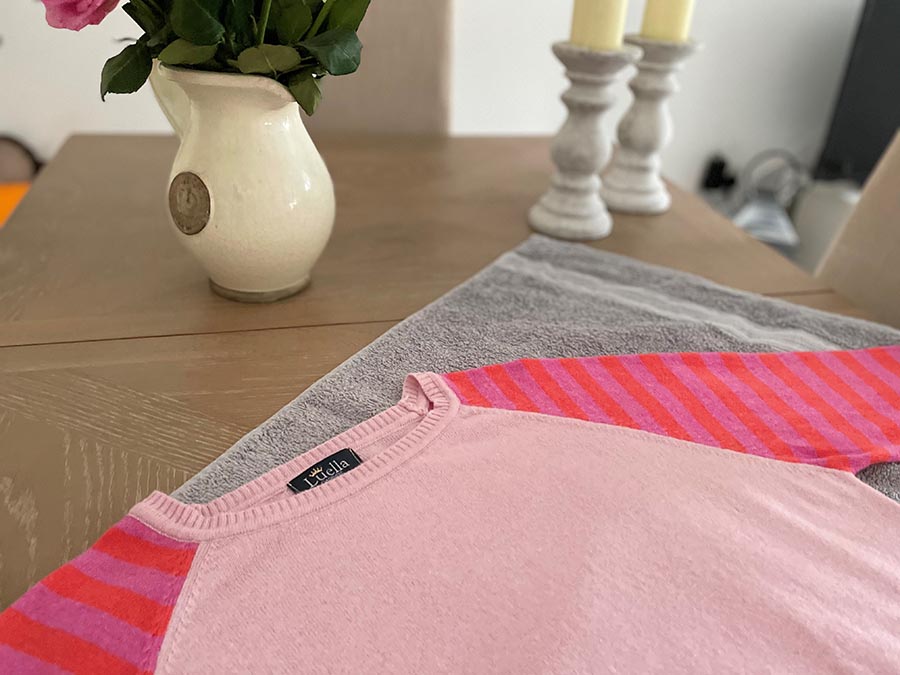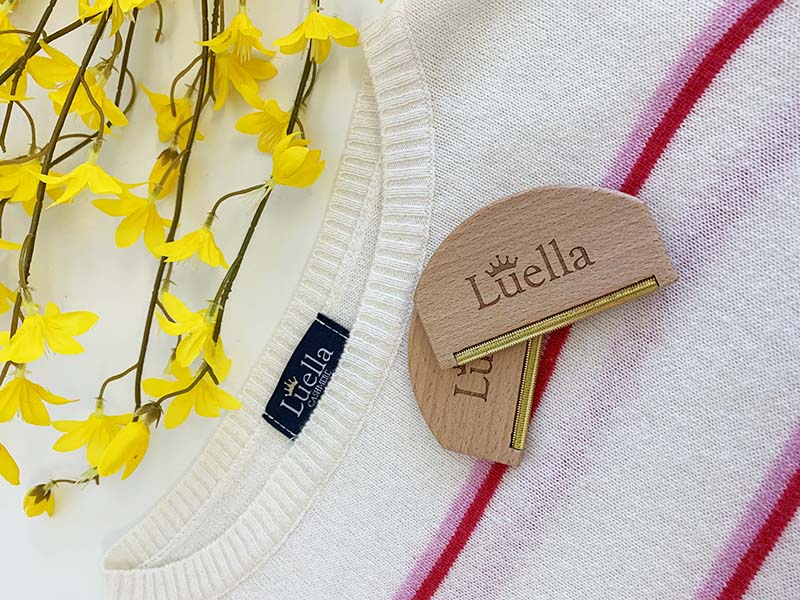 Designed in Great Britain | Made in Italy
Designed in Great Britain | Made in Italy
 sales@luellafashion.co.uk
sales@luellafashion.co.uk
 + 44 (0) 1454 238940
+ 44 (0) 1454 238940
 Designed in Great Britain | Made in Italy
Designed in Great Britain | Made in Italy
 sales@luellafashion.co.uk
sales@luellafashion.co.uk
 + 44 (0) 1454 238940
+ 44 (0) 1454 238940
Benjamin Franklin famously declared that nothing is certain except death, taxes and your woollens pilling. OK, perhaps we added the last bit, but anyone who has ever owned any kind of knitwear will know that eventually, those unwelcome little bobbles will start to appear.
But are they avoidable? Here, we’ll have a look at what causes pilling and investigate whether it can be avoided, minimised or fixed.

Pilling is the word used by fabric experts for what’s usually known as bobbling. It’s where little balls of fabric start to appear on the surface of woollen knitwear. They can be anything from the size of a grain of rice to that of a small pea, particularly in a chunky knit where you might miss it growing. The pills are formed by the strands of fabric getting repeatedly knotted around each other. Although your instinct is usually to try and pull them off, this can be damaging, as it can rip off a certain amount of fabric that’s still part of the knitwear.
As removing pilling is reductive, you will, over time, wear away your garment and leave it lifeless and thin if you keep picking at the pills. It’s all part of the lifecycle of a jumper, but there are ways of prolonging its useful life.

You can guarantee zero pilling by never wearing your jumper and keeping it in a glass case, but where’s the fun in that? Unfortunately, pilling is an unavoidable result of wearing and enjoying your knitwear. Every time you move and flex the fabric, you’re giving each strand the opportunity to rub against another, and that will inevitably lead to tangles. Just like the wires of your earphones, you can’t work out why they tangle, but they always do!
Pilling can, however, be reduced. One simple way is to simply not wear the same garment day after day, tempting though it may be. Every pill starts with two fibres interlocking and grows from there. If you just let your jumper lie for a day or two without putting anything on top of it, you’ll find that more of the fibres will relax back into their natural, untangled, shapes, so many potential new pills will be nipped in the bud.
Pilling on the inside is less noticeable so doesn’t really matter, but on the outside, it’s where the appearance of the garment suffers. Since rubbing against other surfaces or fabrics can make the problem worse, try to avoid wearing the item underneath another garment whenever possible. Obviously, you’ll occasionally slip on a jacket or coat over the top, but the less often you do it, and the lighter the jacket, the better.
Storage is another potential source of pilling. Most of us gently wash, dry and fold our cashmere clothes, then place them in piles in our wardrobe drawers or on shelves.
You’d need a pretty big house if you were to store all your clothes separately on their own shelves, so it’s pretty much unavoidable – we get it. But cashmere piled on cashmere, or many other fabrics for that matter, can cause those troublesome little tangles, so is best avoided.
Don’t start looking on Rightmove just yet, though – you can help by simply placing a sheet of paper between each two garments, and if you’re really serious, you can fold each garment around a piece of paper to keep wool-on-wool rubbing to an absolute minimum.
Never use old newspapers or magazines as the print will come off – use acid-free tissue paper if possible. Alternatively, you can get purpose-made clothes bags to keep them safely stored away.

As mentioned above, never attempt to pick the pills off with your fingers. You’ll cause irreparable damage to the knit, and you’ll wear the garment out much quicker than would otherwise be the case.
Similarly, some people turn to razor blades or scissors to get rid of the fuzzy balls, but again, it’s not a good idea because you will end up shearing off lots of perfectly good fabric that’s still attached to the garment, and that will shorten its life.
By far the safest and kindest way to get rid of pills is to use a comb designed specifically for the task – a cashmere comb. Ideally, you should do this before you wash your sweater, as the washing process itself can cause small pills to grow. The idea is to remove any small pills before they grow, but a gentle comb might actually untangle some of the loosely bound fibres rather than removing them, so without knowing it you’ll be keeping your garment looking newer for longer.
You can find out all you need about looking after your garments – that’s washing, drying, storage and more, on our cashmere care page.
Now you know what causes pilling, how to prevent it and how to get rid of those bobbles, you should be on the way to getting much, much more life out of not just your cashmere clothing, but all your woollens. The longer it looks like new, the better. And with these tips, that could end up being years.